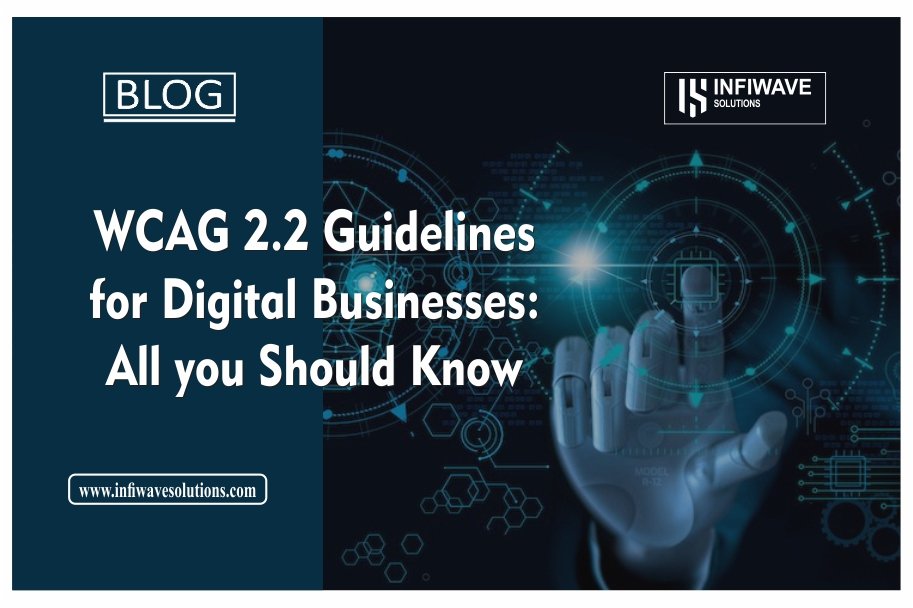
- October 7, 2022
- ksolutions
- 0
The leading search engine Google processes over 8.5 billion searches per day.
Every day, billions of consumers browse several websites and mobile applications for tasks including searching, reading, playing games, and shopping. From buying to selling, learning to teaching, and connecting to meetings, everything is at our fingertips – thanks to the digital transformation spree.
However, there remains a considerable chunk of users who are still aloof from a complete access to web and mobile software due to their disabilities. The upcoming WCAG compliance combats some of the limitations.
WCAG: Overview and Guidelines
The WCAG recommendations provide a thorough technical overview of accessibility recommendations and related success criteria. With the use of these standards, web information will be more easily accessible to those with disabilities such as vision, hearing loss, physical or movement limits, speech, cognitive, linguistic, learning, and neurological impairments. The WCAG recommendations are more like compliances or legal standards that organizations must adhere to in order to guarantee that web content is equally accessible to all users.
Some of the WCAG’s current guidelines are:
- Providing audio content with transcripts and captions.
- Utilizing specific hues and contrast ratios in design components.
- Using suitable alt text for pictures and images (compatible with screen readers or Braille systems)
The four principles of WCAG 2.2
The WCAG are a set of requirements and guidelines that describe how to make websites accessible. They are organized as four principles: perceivable, operable, understandable, and robust. These aren’t just essential standards; they are keys to making accessible web content. These internationally recognized guidelines are developed by World Wide Web Consortium (W3C).
- Perceivable: Information and user interface elements need to be presented in a way that people can understand.
- Operable: User interface components and navigation must be functional.
- Understandable: Information and user interface functions must be understandable.
- Robust: Make sure that the content must be robust enough to be interpreted by a broad range of user agents, including assistive devices.
Conformance levels of WCAG 2.2
According to WCAG compliance, web content should meet at least one of the following conformance levels in total.
Level A:
It depicts minimal compliance. Websites that do not correspond to Level A are usually challenging for individuals with disabilities to access. As a result, a website must meet at least Level A compliance. Therefore, for a website to be Level A compliant, it must comply with specific requirements, such as being navigable via keyboard and having video captions.
Level AA:
It exhibits acceptable adherence. Websites that meet level AA accessibility requirements are simple for such disabled users to access. A website must conform to certain standards in order to be considered Level AA compliant. Such as, colour contrast must be at least 4:5:1, navigation elements must be distributed uniformly throughout the website, and form fields must include proper labels.
Level AAA:
It displays optimum compliance. Websites that meet level AAA accessibility standards are smoothly usable by a broad range of users, including those with and without disabilities. A website must fulfil a number of criteria in order to be considered Level AAA compliant, including sign language interpretation for audio and video, a colour contrast ratio of at least 7:1, the provision of context-sensitive support, and others.
Benefits of WCAG Compliance for your Business:
Enhance Usability:
The purpose of the WCAG rules is to guarantee that web content is usable by all users, including those with disabilities that specifically affect their ability to see, hear, speak, move, etc. It boosts customer satisfaction.
Building a Brand:
It’s essential to represent a brand as inclusive. Apps and websites that are equally accessible prove that a company does not discriminate against those with and without limitations.
Improve SEO Metrics:
Following the WCAG guidelines at each stage can help businesses raise their total site score, making their site more searchable on search engines. Improved SEO stats might assist them in driving more visitors to their website.
Enhanced UX:
The more the accessibility, the better the user experience offered. Therefore, it is essential that companies follow accessibility standards like WCAG 2.2 to provide the best user experience.
Higher Revenue:
Following web accessibility can increase long-term loyalty, great positive word-of-mouth, and boost sales. Providing a great user experience helps a business to add more value in terms of revenue and lead generation.
Legal compliances:
The WCAG guidelines are not merely for accessibility. To develop their app or website content accessible to everyone, organizations should embrace certain legal compliances. Failure to follow accessibility guidelines may result in legal issues for businesses.
Summing Up
Businesses and organizations that want to identify themselves as ethical and inclusive, prevent discrimination lawsuits and achieve the biggest possible client base should implement these standards in all digital places where they interact with the public. This includes websites, electronic documents, apps, and software, among other things.
Equal access to the web/mobile app is a basic right of all people with or without specific disabilities. To ensure that everyone enjoys access to apps equally and to comply with legal and regulatory requirements, firms must adopt accessibility principles like WCAG 2.2.
About the Author
Written by Infiwave Solutions

